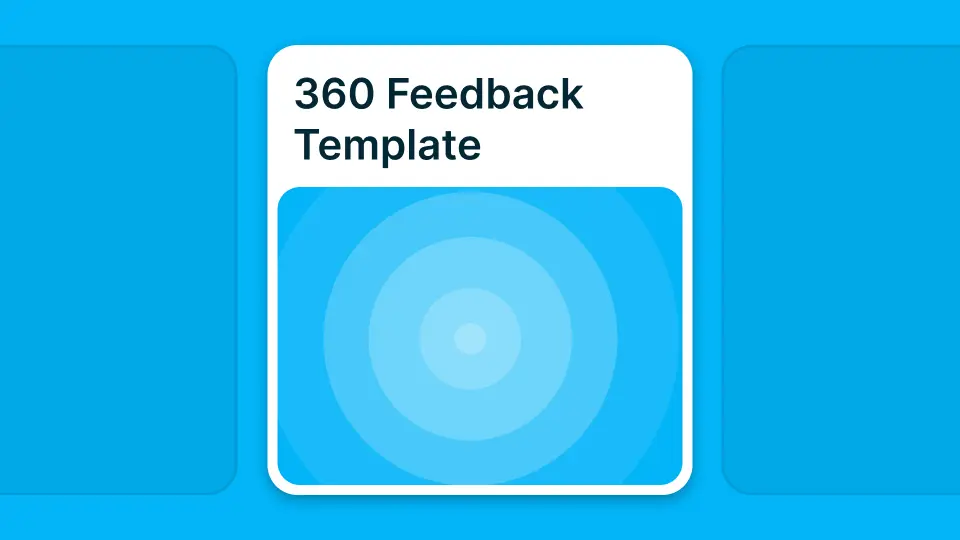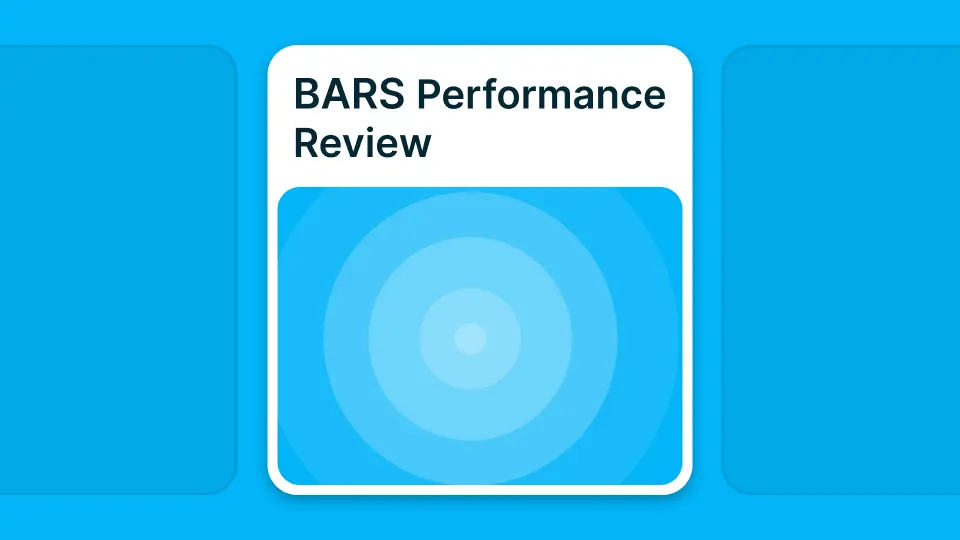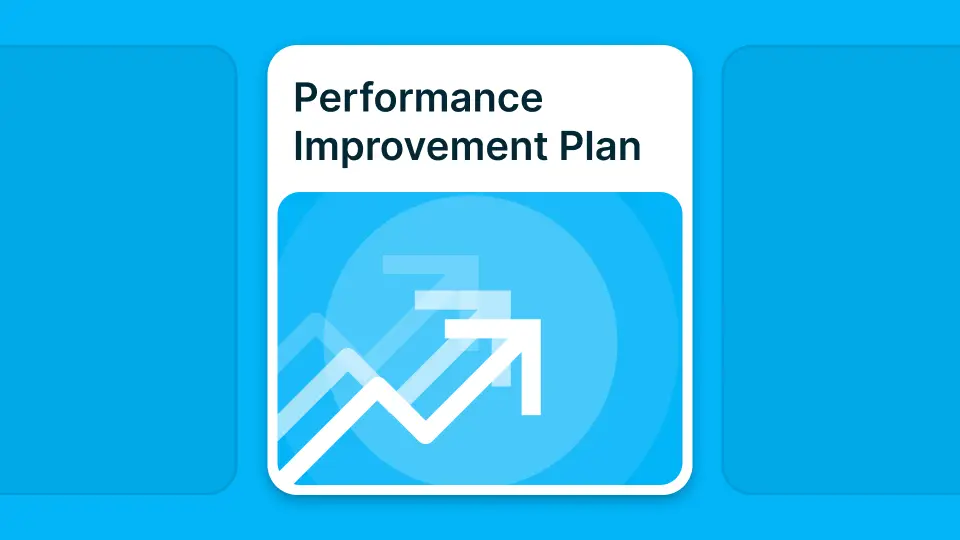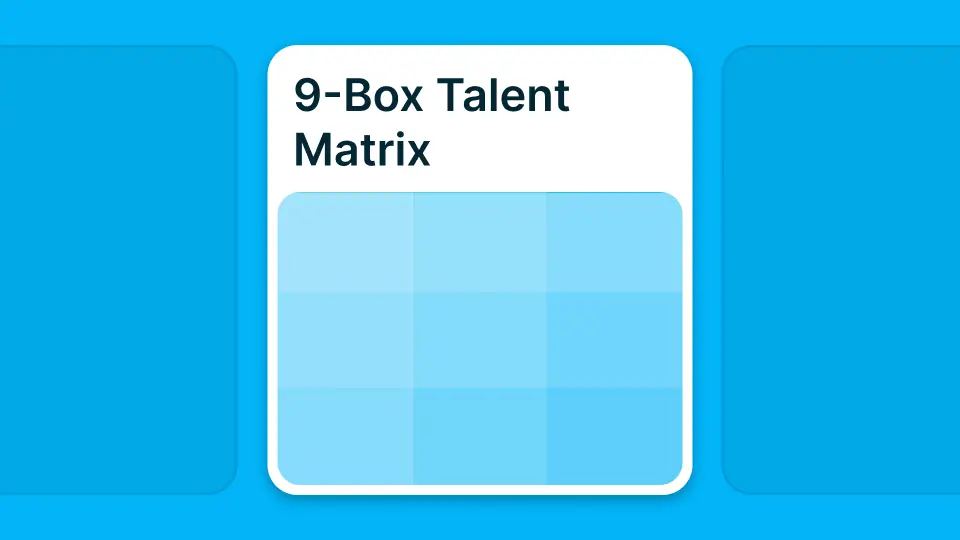Free PIP Template Quick Start (PDF) – Simple Performance Improvement Plan
Address performance issues with a structured, straightforward Performance Improvement Plan template. This simple PDF form provides the essential framework for documenting performance gaps, setting clear improvement goals, defining support resources, and tracking progress. Ideal for managers handling their first PIP or organizations needing a no-frills approach to performance management.
Note: This template features German-language content. For a comprehensive English system with SMART goals framework, role-based examples, and legal compliance checklist, see our Complete PIP Template (Excel).
What's Inside This Quick Start PIP Template
This straightforward performance improvement plan includes:
- Performance Issues Section with space to document specific problems and concrete examples
- Improvement Goals Table listing actions, responsible parties, and deadlines
- Support & Resources Section detailing how managers will help employees succeed
- Timeline & Milestones for progress reporting and check-in schedules
- Results Evaluation Section to document whether goals were achieved
- Simple Fill-in Format requiring no training or complex setup
- PDF Format for printing, digital completion, or annotation
Why Use a Structured PIP Template
Performance conversations are difficult, and without structure, they often fail. Vague feedback like "improve your attitude" or "be more proactive" doesn't give employees actionable direction. A structured template forces specificity: what exactly needs to improve, how it will be measured, what support is available, and by when results are expected.
This quick start template provides the minimum viable structure for a legally defensible, fair PIP without overwhelming managers with complexity. It ensures you document the essential elements—specific issues, measurable goals, manager support, and progress tracking—that make PIPs effective development tools rather than just termination paperwork.
How to Use This Quick Start PIP Template
- Download the PDF and review the structure before your PIP conversation
- Document specific issues in the performance problems section with concrete examples and impact
- Set clear improvement goals with specific actions, responsible parties, and deadlines (typically 30-90 days)
- Define support explaining what training, resources, or coaching you'll provide
- Establish check-ins scheduling regular progress reviews (weekly or bi-weekly recommended)
- Conduct initial meeting reviewing the PIP with the employee, answering questions, and getting signatures
- Track progress documenting each check-in meeting and any issues or improvements
- Complete evaluation at the end of the PIP period, determining whether goals were met
Pro tip: The most successful PIPs have weekly check-ins, not just an initial meeting and final review. Regular touchpoints help employees course-correct quickly and demonstrate your genuine investment in their success.
Key Elements of Effective PIPs
Specific Performance Issues:Vague problems like "poor communication" don't help. Instead: "Client emails go unanswered for 48+ hours despite 24-hour response SLA, resulting in 3 escalations in the past month." Specificity enables improvement.
Measurable Goals:"Improve time management" is not measurable. "Complete weekly project reports by Friday 5pm" is. Every goal should have observable, objective success criteria.
Manager Support:PIPs should never be "sink or swim." Document what training, tools, mentoring, or workload adjustments you're providing. This demonstrates good faith and increases success rates.
Realistic Timeline:30 days is rarely enough for meaningful behavior change. 60-90 days is standard. The timeline should match the severity of issues and complexity of required improvements.
Regular Check-ins:Weekly or bi-weekly meetings keep everyone aligned, allow early intervention when things aren't working, and document your ongoing support efforts.
When to Use Simple vs. Comprehensive PIP Templates
This Quick Start Template is best for:
- First-time managers handling their first PIP
- Small companies without formal HR departments
- Straightforward performance issues with clear improvement paths
- Organizations wanting minimal administrative overhead
The Comprehensive PIP System is better when you need:
- Role-specific PIP examples (Engineering, Sales, Customer Success, Operations)
- SMART goals framework with common mistakes guide
- Legal compliance checklists (pre, during, post-PIP)
- Bias mitigation guidance and objective criteria
- Progress tracking across multiple check-in meetings
- Standardized approach across large organizations
FAQ
How long should a PIP last?
Most PIPs run 60-90 days. Shorter periods (30 days) rarely allow enough time for sustained behavior change. Longer periods (6+ months) can feel punitive and create prolonged uncertainty. Match the timeline to the severity of issues and complexity of improvements needed.
Should the employee sign the PIP?
Yes. Signatures acknowledge that both parties understand the expectations, not that the employee necessarily agrees with everything. If an employee refuses to sign, document their refusal and have a witness present. Lack of signature doesn't invalidate the PIP.
What if the employee doesn't improve?
If goals aren't met despite genuine support and regular check-ins, termination may be appropriate. The PIP documentation demonstrates you gave fair warning, clear expectations, support, and time to improve—important for legal protection.
Can we extend a PIP if the employee is making progress but hasn't fully met goals?
Yes, extensions are common when employees show genuine effort and partial improvement. Document why you're extending, what still needs work, and the new timeline. This demonstrates good faith while maintaining accountability.
What's Inside This Quick Start PIP Template
This straightforward performance improvement plan includes:
- Performance Issues Section with space to document specific problems and concrete examples
- Improvement Goals Table listing actions, responsible parties, and deadlines
- Support & Resources Section detailing how managers will help employees succeed
- Timeline & Milestones for progress reporting and check-in schedules
- Results Evaluation Section to document whether goals were achieved
- Simple Fill-in Format requiring no training or complex setup
- PDF Format for printing, digital completion, or annotation
Why Use a Structured PIP Template
Performance conversations are difficult, and without structure, they often fail. Vague feedback like "improve your attitude" or "be more proactive" doesn't give employees actionable direction. A structured template forces specificity: what exactly needs to improve, how it will be measured, what support is available, and by when results are expected.
This quick start template provides the minimum viable structure for a legally defensible, fair PIP without overwhelming managers with complexity. It ensures you document the essential elements—specific issues, measurable goals, manager support, and progress tracking—that make PIPs effective development tools rather than just termination paperwork.
How to Use This Quick Start PIP Template
- Download the PDF and review the structure before your PIP conversation
- Document specific issues in the performance problems section with concrete examples and impact
- Set clear improvement goals with specific actions, responsible parties, and deadlines (typically 30-90 days)
- Define support explaining what training, resources, or coaching you'll provide
- Establish check-ins scheduling regular progress reviews (weekly or bi-weekly recommended)
- Conduct initial meeting reviewing the PIP with the employee, answering questions, and getting signatures
- Track progress documenting each check-in meeting and any issues or improvements
- Complete evaluation at the end of the PIP period, determining whether goals were met
Pro tip: The most successful PIPs have weekly check-ins, not just an initial meeting and final review. Regular touchpoints help employees course-correct quickly and demonstrate your genuine investment in their success.
Key Elements of Effective PIPs
Specific Performance Issues:Vague problems like "poor communication" don't help. Instead: "Client emails go unanswered for 48+ hours despite 24-hour response SLA, resulting in 3 escalations in the past month." Specificity enables improvement.
Measurable Goals:"Improve time management" is not measurable. "Complete weekly project reports by Friday 5pm" is. Every goal should have observable, objective success criteria.
Manager Support:PIPs should never be "sink or swim." Document what training, tools, mentoring, or workload adjustments you're providing. This demonstrates good faith and increases success rates.
Realistic Timeline:30 days is rarely enough for meaningful behavior change. 60-90 days is standard. The timeline should match the severity of issues and complexity of required improvements.
Regular Check-ins:Weekly or bi-weekly meetings keep everyone aligned, allow early intervention when things aren't working, and document your ongoing support efforts.
When to Use Simple vs. Comprehensive PIP Templates
This Quick Start Template is best for:
- First-time managers handling their first PIP
- Small companies without formal HR departments
- Straightforward performance issues with clear improvement paths
- Organizations wanting minimal administrative overhead
The Comprehensive PIP System is better when you need:
- Role-specific PIP examples (Engineering, Sales, Customer Success, Operations)
- SMART goals framework with common mistakes guide
- Legal compliance checklists (pre, during, post-PIP)
- Bias mitigation guidance and objective criteria
- Progress tracking across multiple check-in meetings
- Standardized approach across large organizations
FAQ
How long should a PIP last?
Most PIPs run 60-90 days. Shorter periods (30 days) rarely allow enough time for sustained behavior change. Longer periods (6+ months) can feel punitive and create prolonged uncertainty. Match the timeline to the severity of issues and complexity of improvements needed.
Should the employee sign the PIP?
Yes. Signatures acknowledge that both parties understand the expectations, not that the employee necessarily agrees with everything. If an employee refuses to sign, document their refusal and have a witness present. Lack of signature doesn't invalidate the PIP.
What if the employee doesn't improve?
If goals aren't met despite genuine support and regular check-ins, termination may be appropriate. The PIP documentation demonstrates you gave fair warning, clear expectations, support, and time to improve—important for legal protection.
Can we extend a PIP if the employee is making progress but hasn't fully met goals?
Yes, extensions are common when employees show genuine effort and partial improvement. Document why you're extending, what still needs work, and the new timeline. This demonstrates good faith while maintaining accountability.
More content
Free Advanced 360 Feedback Template | Ready-to-Use Excel Tool


Free Advanced 360 Feedback Template | Ready-to-Use Excel Tool
Free IDP Template Excel with SMART Goals & Skills Assessment | Individual Development Plan


Free IDP Template Excel with SMART Goals & Skills Assessment | Individual Development Plan
Free BARS Performance Review Template | Excel with Auto-Calculations & Behavioral Anchors


Free BARS Performance Review Template | Excel with Auto-Calculations & Behavioral Anchors
Performance Improvement Plan (PIP) Template | Excel & Google Sheet


Performance Improvement Plan (PIP) Template | Excel & Google Sheet
Free 9-Box Talent Matrix Template for Excel & Google Sheets | Ready-to-Use


Free 9-Box Talent Matrix Template for Excel & Google Sheets | Ready-to-Use
Vorlage für 360-Grad-Entwicklungsreview


Vorlage für 360-Grad-Entwicklungsreview
Ein wirksames Instrument, das Orientierung und Klarheit bietet, sind 360-Grad-Entwicklungsreviews. Er ermöglicht es Mitarbeitenden, Führungskräften und Kolleg:innen, fundiertes und konstruktives Feedback zu geben, das den individuellen Karrierefortschritt unterstützt. Die folgenden Vorlagen bieten eine strukturierte Möglichkeit, Feedback gezielt auf die Förderung von Stärken und die Identifizierung von Entwicklungspotenzialen auszurichten.

